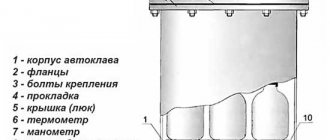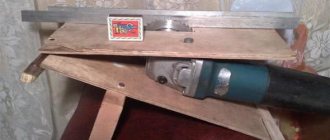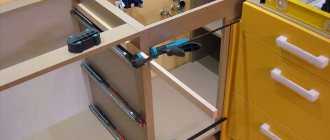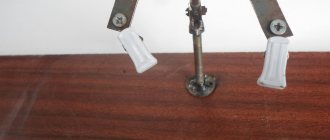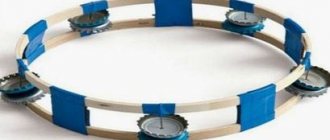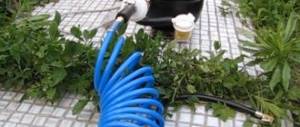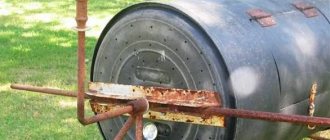The sandblasting machine is an extremely useful and necessary device that has been successfully used for several decades in various fields of industry. Using this device, metal parts are cleaned and degreased, and glass is frosted.
You can buy a sandblasting machine at any store, but a good device is not cheap, and economy-class models often fail in quality. Therefore, an excellent option would be to make this device yourself. Homemade sandblasting is not without its drawbacks, which are offset by the simplicity, quite decent performance and low cost of the device. Using such a device, you can independently carry out various works - remove rust, frost glass.
Operating principle of sandblasting machine
Many people ask the question - how to sandblast? The main thing is to determine the operating principle of the device. The device works like this: an abrasive jet under high pressure flies out of the gun. The final result of the work depends on the selected materials.
In order to make a homemade sandblasting device, you need to have a small compressor and construction sand, which you don’t have to buy - just sift regular sand through a fine sieve. Depending on the tasks set, the quality of the sand used is selected. For cleaning metal surfaces, sand of medium or low quality is quite suitable. When working with a sandblasting machine, you need to take care of your own safety, namely, protect your eyes and exposed skin.
Having studied the main aspects of the operation of a sandblasting machine, as well as the scope of its application, it is necessary to determine for what purposes the manufactured device will be used. If the purpose of homemade sandblasting is decorative processing of glass, you need to make a sandblasting chamber, if cleaning metal parts, an open-type device will be useful.
It is also necessary to pay attention to how often the device will be used, at what level - professional or amateur. Based on the data obtained, it is possible to accurately determine what materials and quality are needed, the expected power and performance of the device, etc.
Classification and application
The main purpose of a sandblasting gun is to pre-clean the car body of stubborn contaminants that cannot be removed by chemical methods. However, the device is also suitable for effectively cleaning any metal surfaces before painting, patination or anodizing.
A sandblasting gun for a compressor uses the injection phenomenon, when a pressure difference is artificially created in the flow supplied from the compressor through a compressed air reducer. Thanks to this, the speed and, accordingly, the kinetic energy of the flow automatically increases. If the air along the way is “weighted” with some fine abrasive material (sand, slag or corundum), then the cleaning efficiency will further increase.
The method of discharging the sandblasting mixture may be different. For example, if you have a powerful compressor with a significant flow rate (from 600...800 l/min), you can use the injection of the mixture through a gun. Ejector sandblasting guns operate on this principle. However, they are less common because they are characterized by increased energy consumption per unit of cleaned area.
In turn, sandblasting injection guns are in many cases more effective than sandblasting chambers: they are bulky and require special care during operation, while the gun only needs to be blown out after each use and periodically inspected at the seal points.
According to the method of supplying abrasive, sandblasting guns for compressors with a tank and with a hose are distinguished. Working with a device of the first type will be periodic in nature - filled, worked, turned off, refilled. Therefore, guns with a tank are more necessary for cleaning relatively small surfaces (up to 1...2 m2), and mostly flat ones. Guns with a hose are less mobile, but they allow you to work for a longer period of time, and the complexity of the configuration of the surface to be cleaned does not matter to them.
Here you can see various compressors for sandblasting
The simplest device is a sandblasting gun.
A homemade sandblaster consists of two main parts - a handle with a tip and two fittings. Before starting work on the manufacture of the device, it is necessary to select a nozzle - an air stream with abrasive material is ejected through it. It is better to buy this part; there is no point in grinding it yourself - most likely you will not achieve the required quality. Then a gun body is made under the nozzle, to which two fittings and a handle are then connected. The simplest version of homemade sandblasting consists of water fittings, a tee and a plastic bottle. In addition, a compressor is needed from which a compressed air flow is supplied to the gun. The sandblasting diagram is shown below. An example of a finished device is shown in the figure. You can also watch videos and drawings on our website.
How to choose the right model?
When choosing, pay attention to the following design elements of the pistol:
- A set of nozzles and the material from which they are made. Sandblasting nozzles made from a hard alloy based on cobalt and tungsten carbide clearly have an advantage in terms of durability.
- Method of attaching the nozzle to the body: the union nut can spontaneously unscrew during long-term operation, especially with vibrations, while the threaded pin is more reliable.
- Ergonomic handle and convenient location of shut-off and control valves.
- The presence of mounting holes on the gun body: this allows, having secured the device, to move the part to be cleaned with your hands relative to it.
Naturally, the performance characteristics of the purchased sandblasting gun must be consistent with the capabilities of the compressor. In particular, when constantly cleaning complex surfaces, the pressure of the abrasive-air mixture for which the device is designed should be as high as possible. It is recommended that the compressor have a pressure reserve of at least 15...20%.
Sandblasting chamber
When carrying out sandblasting work over large areas, the abrasive is quickly consumed - a considerable part of the material simply scatters. To increase the efficiency of work, a special sandblasting chamber is offered. It is a box welded from metal, lined with steel sheets. This design is ideal for processing small parts. Making a camera with your own hands is not easy, but it is quite possible even for a beginner. For convenience, the structure is placed on the table. A viewing glass must be placed on one of the long sides of the chamber.
In the front part of the structure, you need to provide two holes with gloves for your hands. The bottom of the structure is a wire grid. Under it there is a special chute through which waste consumables exit. There is a pistol inside the structure. The camera is illuminated. It is advisable to equip it with ventilation. You can watch sandblasting on video here.
Design features
The sandblasting nozzle on the outgoing hose allows the master to regulate the supply of abrasive to the working surface and direct it to the right places. To understand how a sandblasting gun works, you need to understand its design features. The device consists of several elements:
- A channel through which abrasive material passes under the influence of air pressure.
- A nozzle through which abrasive particles will fly out of the device, hitting the material being processed.
- Handle with switch. It can be made of plastic, metal, or coated with a layer of rubber for better grip.
- Regulators for air and abrasive supply.
The most important element of this design is the nozzle. It is important to be careful about the material used to make the nozzle. If it is thin metal or plastic, the nozzle will fly apart from the impacts of the abrasive after a short period of use. The best nozzles are those made of tungsten or ceramic.
Pressure type sandblasting machines
If desired, you can make a homemade pressure-type sandblaster. To do this, you need a metal barrel with a cut bottom, in which a cone is installed. At the bottom you need to attach a shutter with a tee. A hose from the compressor and a hose with a nozzle are connected to it.
The article only roughly describes the basic principles of operation and making a sandblasting machine with your own hands. If it is necessary to manufacture a device of this type, the reader needs to carefully calculate and think through everything.
homemade sandblasting and its components
Sandblast with your own hands. homemade.
Do it yourself sandblasting
How to choose the right model?
Before buying sandblasting machines, you need to familiarize yourself with a number of factors that affect the performance of the equipment:
- Sandblasting devices must be equipped with thick-walled hoses to withstand prolonged exposure to abrasive and pressure.
- The abrasive feed rate depends on the size of the hole on the nozzle.
- It is not recommended to buy models with plastic parts, as they will quickly fail.
- You need to evaluate the pen before purchasing so that it is convenient to work in the future.
If you need a model for your home, garage, or workshop, you need to buy a unit with a container for abrasive.
Engraving glass using a sandblaster
First you need to cover the entire surface of the glass with self-adhesive film, then draw a suitable design and cut it out. The surface of the resulting image should be carefully processed using a sandblasting machine. After completing this stage of work, remove the film. The image is clear and bright. In addition, the master can independently adjust the depth of engraving by applying sand to the surface several times. The drawing looks original both independently and with LED backlighting. Homemade sandblasting copes with the assigned tasks perfectly and is in no way inferior to expensive devices that are sold in stores.
A sandblaster can be used to cut holes on glass surfaces. To do this, you need to take a metal plate only a few mm thick and cut a hole in it. Then you need to attach the sheet to the surface and begin to process the surface. This procedure takes about five minutes and takes half a bottle of sand. The advantage of this method is fast, cheap work with a smooth, chip-free hole. Sandblasting shows excellent results in various fields of application, both at the amateur and professional level.
Advantages and disadvantages
The sandblasting gun has a number of strengths and weaknesses. Advantages:
- Ability to clean various surfaces.
- In addition to cleaning, you can create an unusual decorative structure of the material.
- Thanks to its small size, it is convenient to work in hard-to-reach places.
- The simple design allows you to assemble it yourself after studying the finished drawing.
- Wide range of choice in construction stores.
- Increasing the productivity of the technological process, saving time.
- Short service life. Large abrasive particles quickly damage the structural elements of the unit.
- High noise level emitted when cleaning workpieces.
- To make the device last longer, you need to install expensive nozzles.
After each cleaning, it is necessary to sweep away any dust that settles on the equipment.
Using a gas cylinder
Very often, craftsmen make homemade sandblasting from a gas cylinder to clean large surfaces. The device is very reliable and durable. But you will need to carefully follow the instructions to avoid trouble.
To make such a design , you must use the following parts.
- Gas cylinder from freon or propane.
- A compressor with a power of up to 3 kW and a capacity of up to 500 liters per minute.
- Ball valves, which can regulate the flow of air and abrasive material.
- A piece of 2" steel plumbing pipe with threads and a plug. This pipe will serve as a kind of funnel through which sand will flow.
- One tee, which has a DN15 thread.
- Rubber hose up to 2 meters long with a diameter of 14 mm.
- The hose is 5 meters long and has a diameter of 10 mm.
- A five-meter gas hose with an internal passage of 10 mm.
- Hose clamps and fittings.
- High quality nozzle.
- Fum, which will be used as a seal and eliminate corrosion on the material.
The nozzle, which is also called an injector, can be made independently, but, as mentioned above, it is advisable to buy a ready-made one from good material. This is a very important part that will provide the necessary pressure in the device.
You can buy a ready-made nozzle or make it yourself. To make your own nozzle, you need to take a metal rod that has a length of 30 mm and a diameter of 10 mm. Then we bore the inner hole to 2.5 mm for a length of 20 mm. The remaining part will be bored to a larger diameter - 6.5 mm .
When all the parts have been selected, you can proceed to the actual assembly of the device.
Equipment assembly sequence
- We release gas from the cylinders and unscrew the valve. There should be no gas left in the container, because if this condition is ignored, the consequences can be very sad (poisoning, explosion). To thoroughly clean the container of gas, you need to insert a hose that connects to the compressor, and then pump it out.
- When the tank is completely empty, make two holes. The first must be done at the very bottom of the cylinder. Diameter - 12 mm. We make the second hole opposite, in the place where the tap with a diameter of 2 inches is installed. An inlet pipe of the same diameter is required.
- There will be a sand drain at the bottom of the cylinder, it is in this place that you need to weld a steel tee DN 15. The welding must be of very high quality to ensure a tight connection.
- To make the structure stable, it is necessary to weld a tripod or small wheels. If you install a wheelbase, this will greatly facilitate moving the device from place to place.
- When the frame is ready, you can install small parts. Fittings are screwed onto all threads. The joints are sealed using fum. In this case, the structure will be completely sealed.
- We install threaded bushings on the open ends of the tee. We screw a hose with a diameter of 14 mm into one of the outlets of the pipe, and a copper tube with a diameter of 10 mm into the other. We install a reinforced hose onto the copper pipe.
- We attach a 14 mm fitting to the cylinder valve. We take a hose with a diameter of 14 mm and fix it with a collet clamp at the cylinder, and attach its other end to a clamp at the tee.
- We look for the free end of the tee and attach a sleeve there that will connect the tee mixer and the nozzle.
- We connect the compressor to the mixer using a hose with a diameter of 10 mm.
- When the design is completely ready, you can connect the device and safely use it. If there is a need to strengthen the operation of the device, then we attach an additional fitting to the sand tank, and connect its other end to the compressor.
Simplified design
It is not necessary to look for a large cylinder to make sandblasting. At home, you can build a mini-device from a plastic bottle, which has a volume of one and a half liters.
To make such a device you will need the following parts:
- plastic bottle;
- ball valve;
- tee connector;
- spray gun valve;
- compressor;
- nozzle.
The compressor must supply air. This device is purchased ready-made.
The device is assembled as follows:.
- We grind the body of the gun to the size of the nozzle. To do this you need to use a lathe.
- We connect the tee-mixer and the body. One fitting is connected to the compressor. It will serve to move air. The other end of the tee is mounted with a nozzle to suck in air. We mount a bottle with abrasive to the third outlet.
- Compressed air must be supplied from the gun to the compressor.
- We place the tap between the tee and the bottle.
- The air movement will be carried out thanks to the handle from the spray gun, which is connected to the tee.
- To add abrasive, you need to cut off the top of the tank.
- Now we pull the trigger, resulting in a jet of sand being released onto the desired surface.
